El Alacrán Street, a sample of the historical past of the city and the influence of the colonial style (Eng - Esp)
19 comments
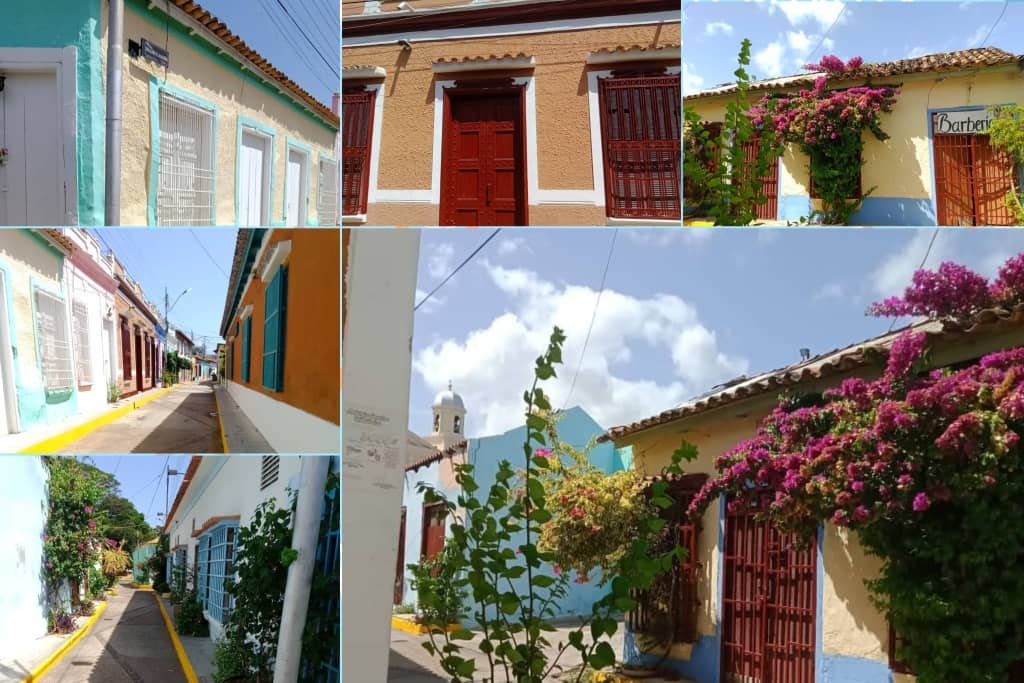
Hello, hello friends lovers of architecture and design is a pleasure to greet you and share my visit to an emblematic street of the city of Cumaná that stands out for its colorful houses with marked influence of the colonial style, stories linked to the city and the commercial growth of the area; The street is called Callejón El Alacrán, located between Sucre Street and Pedro Elías Aristiguieta Avenue, the alley is made up of two alleys; Santa Inés Street with exit to the Manzanares River and La Luneta Street whose exit is located towards Comercio Street in the center of the city very close to Plaza Miranda, it is the first time I visit this street and I was impressed by how narrow it is, cars can not pass through there due to the smallness of it, you can only move on foot, by motorcycle or bicycle, in fact during my visit I could see several motorcycles parked on the street.
According to the information provided by a kind lady resident and born in the city who accompanied me on the tour, her grandparents told her that this street in colonial times was known as the gallows, because that is where those sentenced to death were taken; the story is transmitted orally from generation to generation and those who had the opportunity to live that moment, repeat it to their children, these to their grandchildren and thus after many years the new generation can know part of these events that are part of the city, upon entering the street you can see large houses with large windows, The walls are usually painted in two colors, the roofs have wooden beams and tiles covering the edges and cornices, from this alley (photo number seven) you can see part of the church of Santa Inés, there is also a peculiar barber shop that stands out for its beautiful flowers in the window, conical roof and covered with tiles.
Hola, hola amigos amantes de la arquitectura y el diseño es un placer saludarles y compartir mi visita a una emblemática calle de la ciudad de Cumaná que destaca por sus coloridas casas con marcada influencia del estilo colonial, historias vinculadas con la ciudad y el crecimiento comercial de la zona; La calle recibe el nombre de callejón El Alacrán, ubicada entre la calle Sucre y avenida Pedro Elías Aristiguieta,el callejón lo conforman dos callejuelas; la santa inés con salida al río Manzanares y calle la luneta cuya salida se ubica hacia la calle comercio en el centro de la ciudad muy cerca de la plaza Miranda, es la primera vez que visito esta calle y me impresionó lo angosta que es, los autos no pueden pasar por allí debido a lo reducido de la misma, solo te puedes movilizar a pie, en moto o bicicleta, de hecho durante mi visita pude ver varias motos estacionadas en la calle.
De acuerdo a la información suministrada por una amable señora residente y nacida en la ciudad que me acompañó en el recorrido, sus abuelos le contaron que esta calle en la época de la colonia se le conocía como la horca, pues por allí conducían a los sentenciados a muerte; la historia se va transmitiendo oralmente de generación en generación y quienes tuvieron la oportunidad de vivir ese momento, lo repiten a sus hijos, estos a sus nietos y así luego de muchos años la nueva generación puede conocer parte de estos eventos que forman parte de la ciudad, al entrar a la calle se observan grandes casas con amplios ventanales, las paredes por lo general están pintadas de dos colores, los techos tienen vigas de madera y tejas cubriendo los bordes y cornisas, desde este callejón (fotografía número siete) se puede observar parte de la iglesia santa Inés, también se ubica una peculiar barbería que destaca por sus hermosas flores en la ventana, techo cónico y cubierto de tejas.
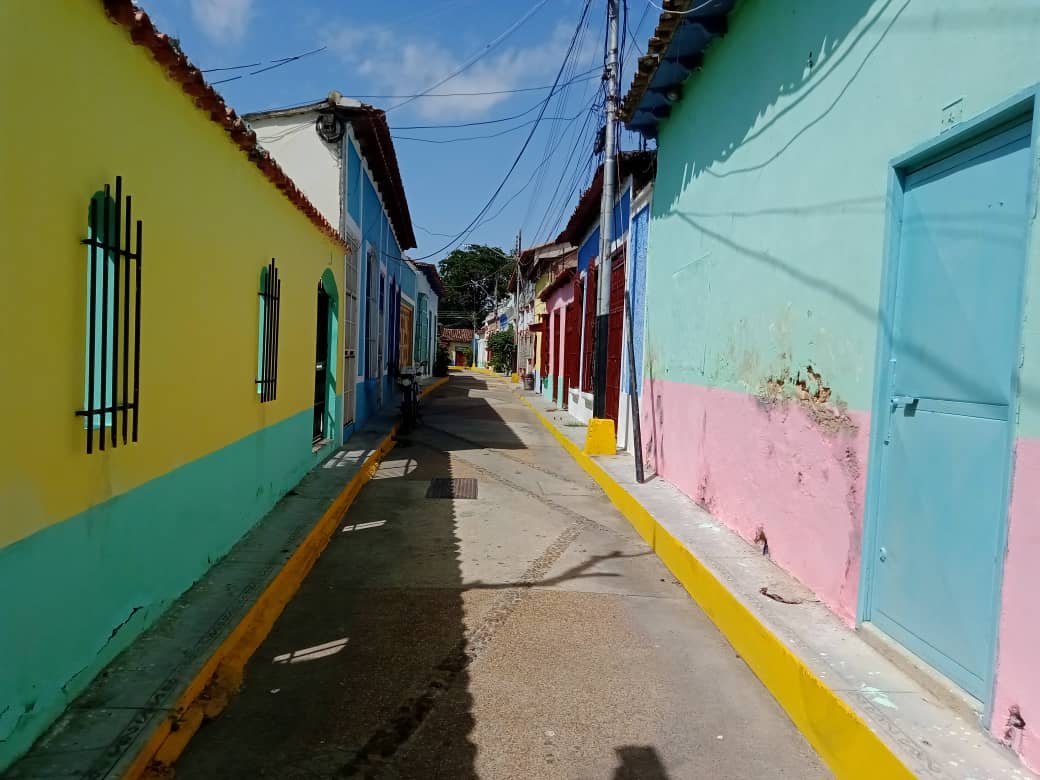
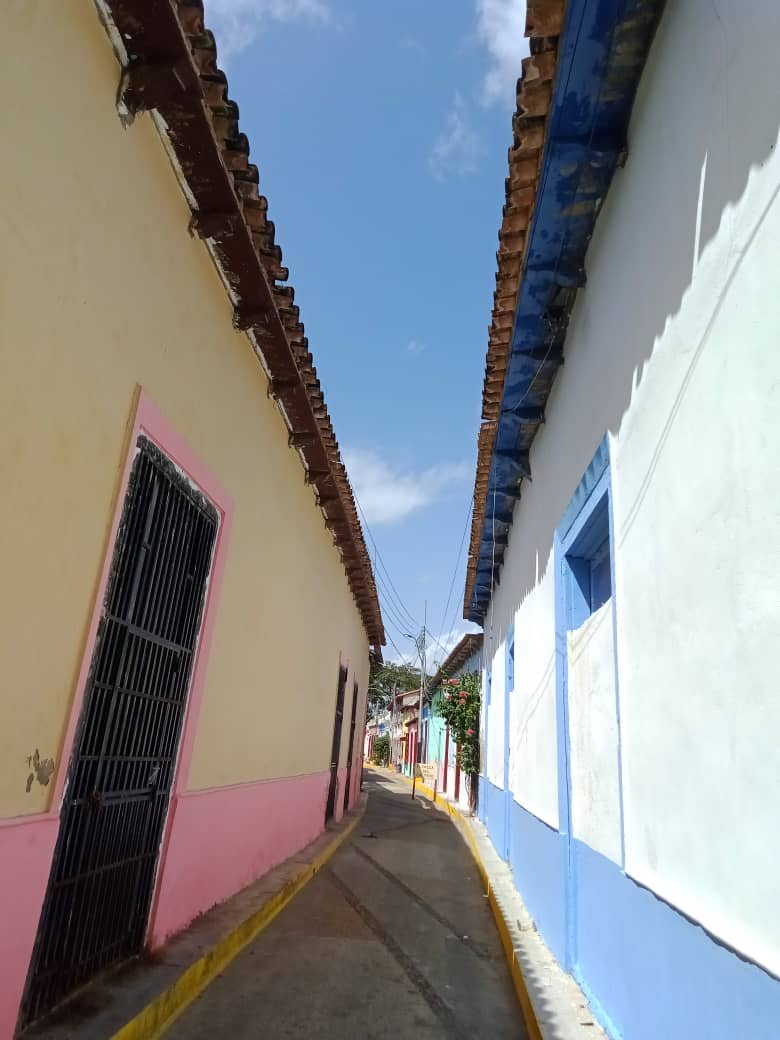
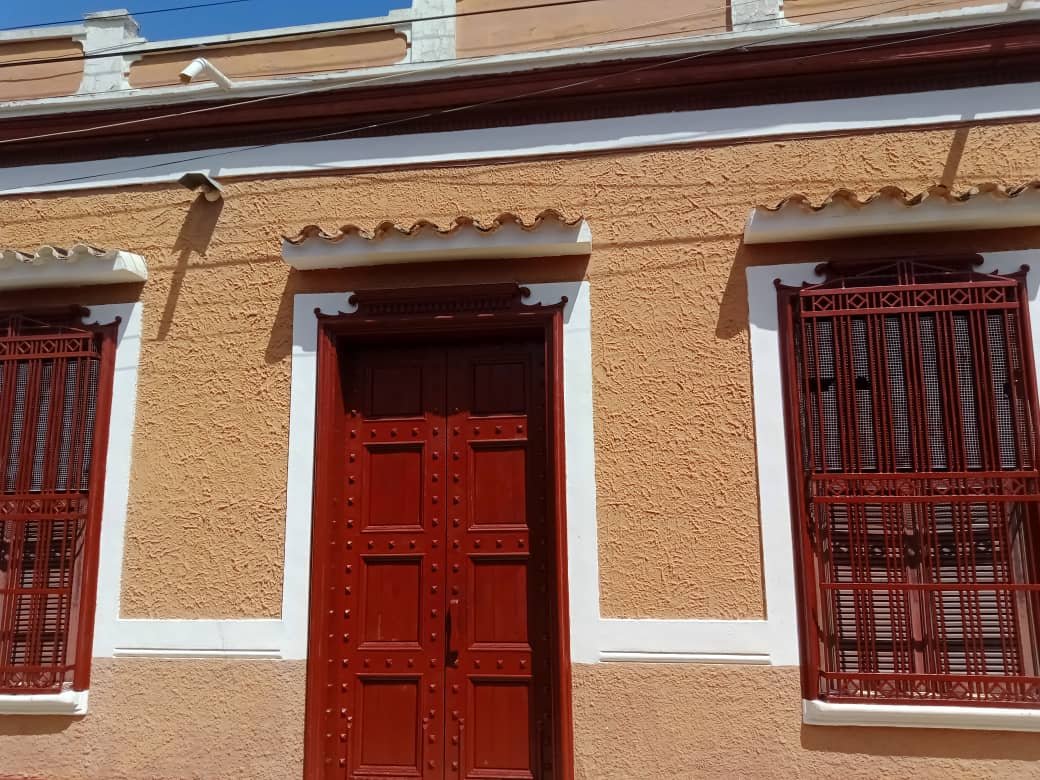

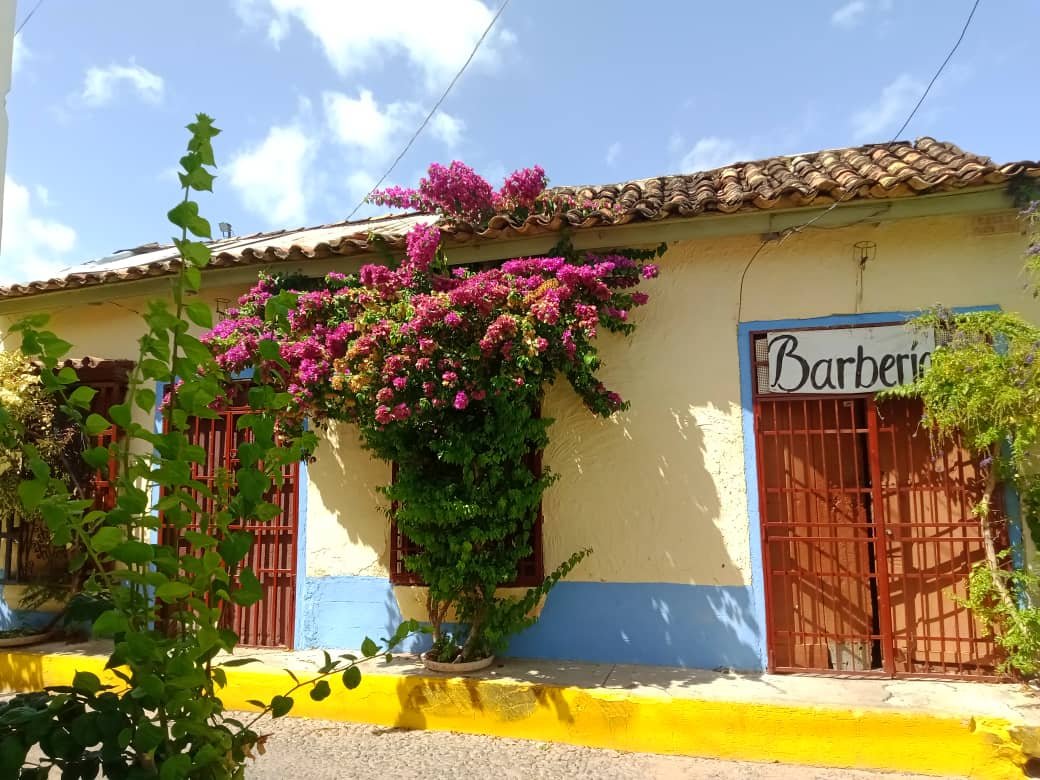
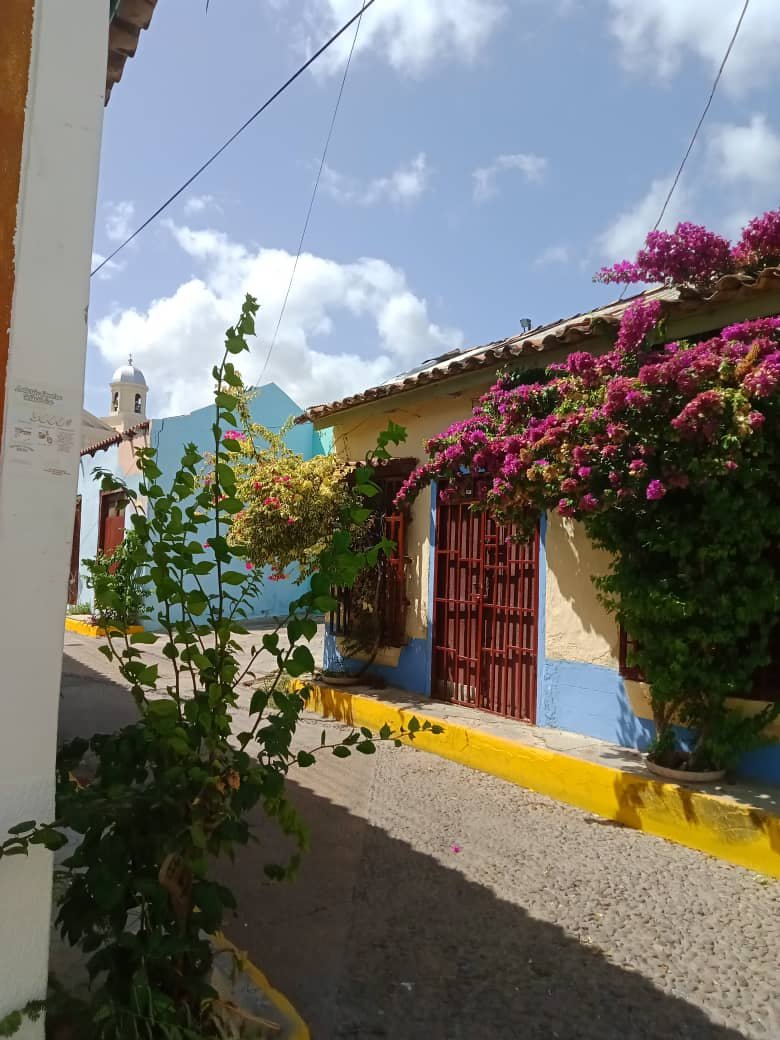
The houses have varied designs on the facade, some decorated with small columns, flowers or family coats of arms, but maintain common elements such as large windows and doors with iron bars and double wooden sheet, among the houses there is a fairly large one that spans the corner, is blue, has several large and small windows, potted plants and a beautiful zigzag design on the bottom of the wall, In front there are beautiful ornamental plants that beautify the narrow street, but despite how colorful the street is for its colorful houses I could not help but feel a little fear as I advanced and felt that I was immersed in a gloomy and mysterious atmosphere, the houses have been repaired several times but retain the original design, according to the lady it is normal to perceive some mystery because many events of the past have much to tell.
Las casas tienen variados diseños en la fachada, algunas decoradas con pequeñas columnas, flores o escudos de la familia, pero mantienen elementos en común como las grandes ventanas y puertas con rejas de hierro y doble hoja de madera, entre las casas hay una bastante grande que abarca la esquina, es de color azul, posee varias ventanas grandes y pequeñas, plantas en macetas y un hermnoso diseño en forma de zigzag en la parte inferior de la pared, al frente hay hermosas plantas ornamentales que embellecen la angosta calle, pero a pesar de lo colorida que es la calle por sus vistosas casas no pude evitar sentir un poco de temor a medida que avanzaba y sentía que me sumergía en una atmósfera sombría y misteriosa, las casas han sido reparadas en varias ocasiones pero conservan el diseño original, según la señora es normal percibir algo de misterio pues muchos eventos del pasado tienen mucho que contar.
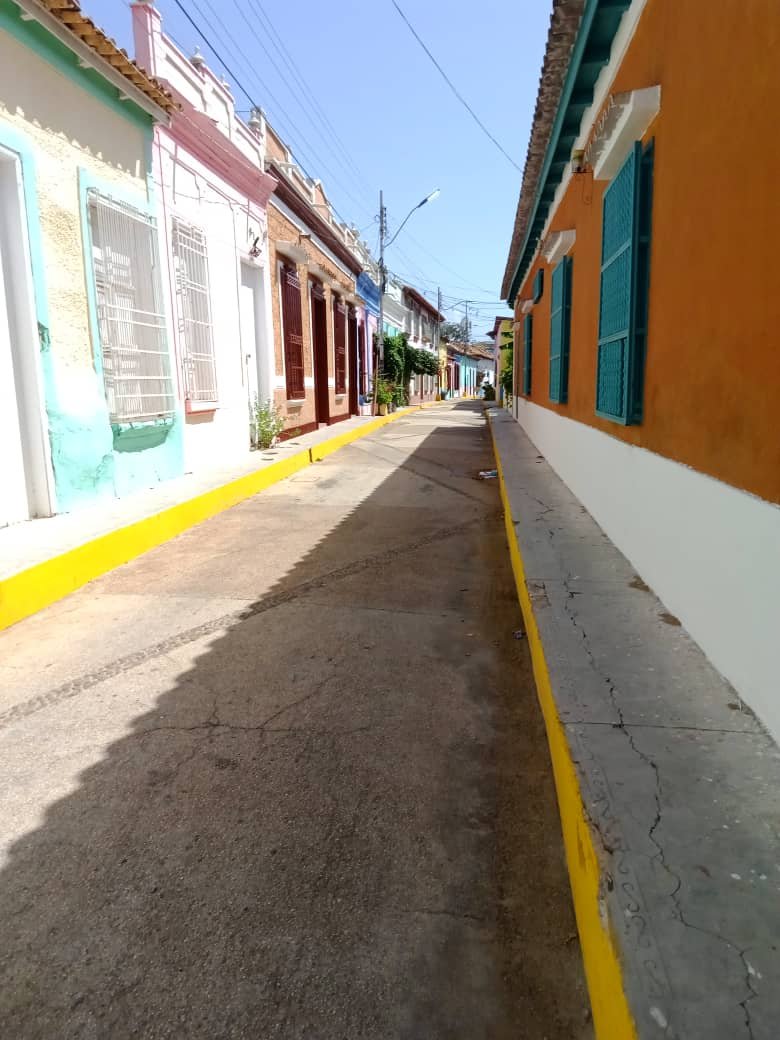
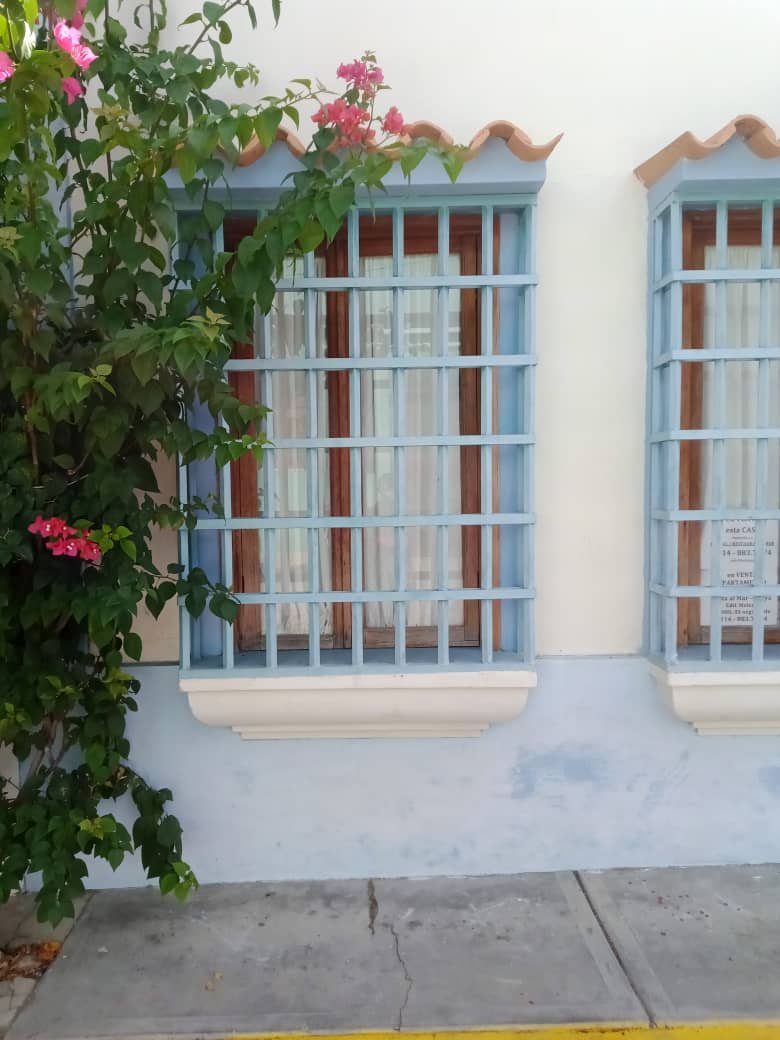
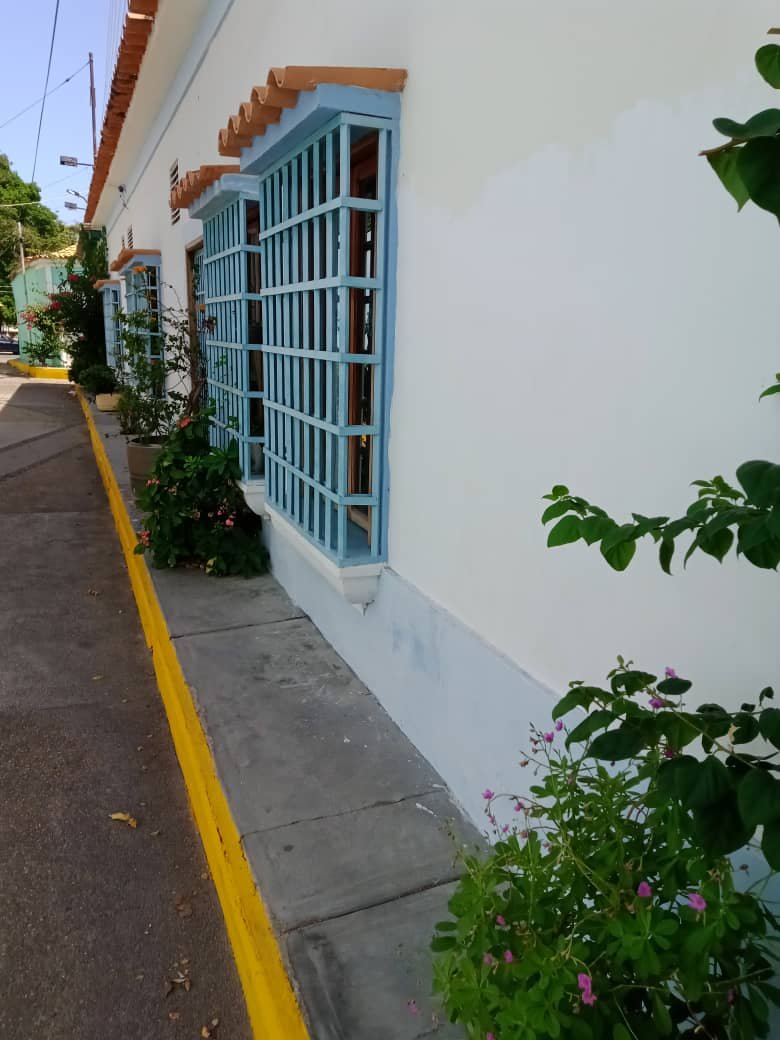
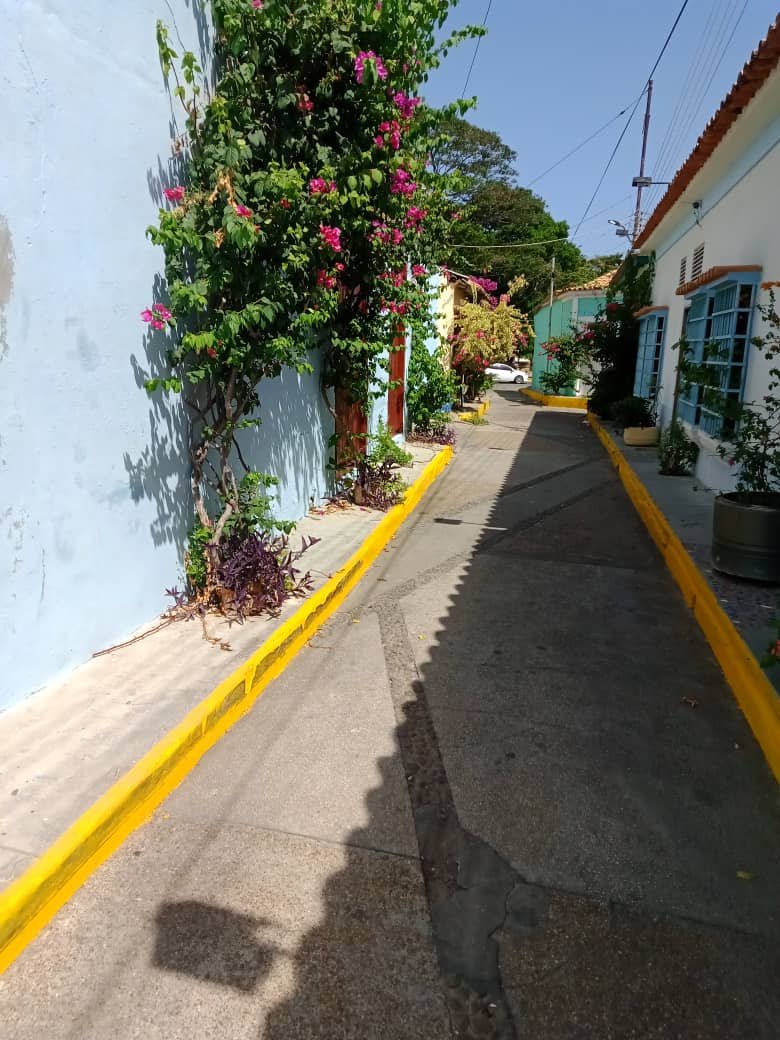
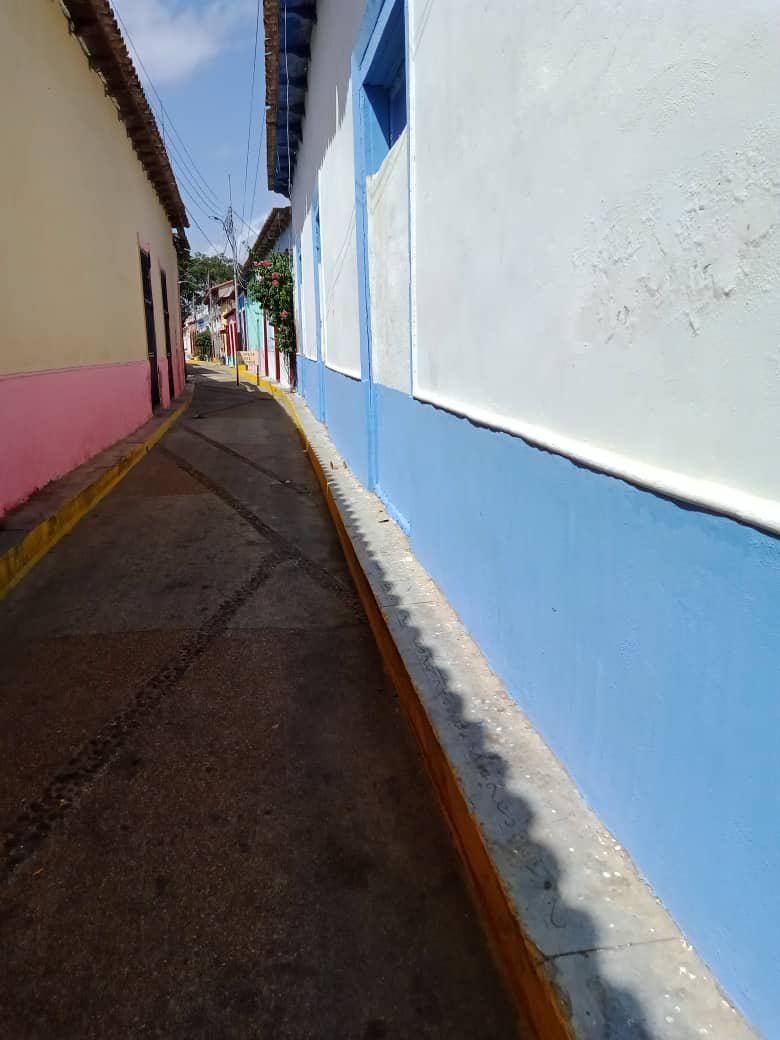
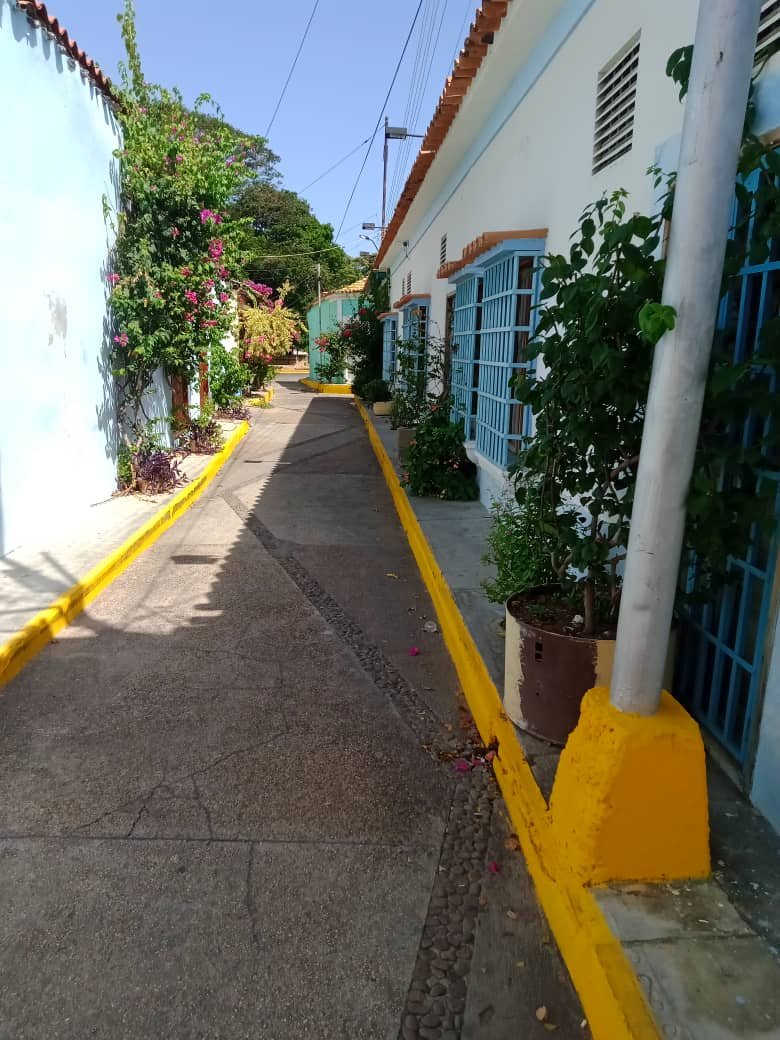
On the next corner is located a house of light yellow with green, at the top you can read the identification of the street and appreciate in detail the windows, doors and roof with wooden beams, as well as the rustic combination of its walls. The last stop was in a house that I liked for the design of its windows at the top, it has a cornice of several strips where rests a triangular figure that emerges from the wall, visiting this street, seeing its colorful and striking houses was a great adventure and a challenge due to the extreme heat of the day and the small space, I think I had never taken so much water in such a short time, but it was worth it to know this part of the city wrapped in an enigmatic atmosphere.
En la siguiente esquina se ubica una casa de color amarilo claro con verde, en la parte superior se pude leer la identificación de la calle y apreciar en detalle las ventanas, puertas y techo con vigas de madera, así como la combinación rústica de sus paredes con marcos de color verde en puertas y ventanas que crean un gran contraste, la última parada fue en una casa que me gustó por el diseño de sus ventanas en la parte superior, tiene una cornisa de varias franjas donde reposa una figura triangular que emerge de la pared, visitar esta calle, ver sus coloridas y llamativas casas fue una gran aventura y un reto debido al calor extremo del día y lo reducido del espacio, creo que nunca había tomado tanta agua en tan poco tiempo, pero valió la pena conocer esta parte de la ciudad envuelta en una enigmática atmósfera.
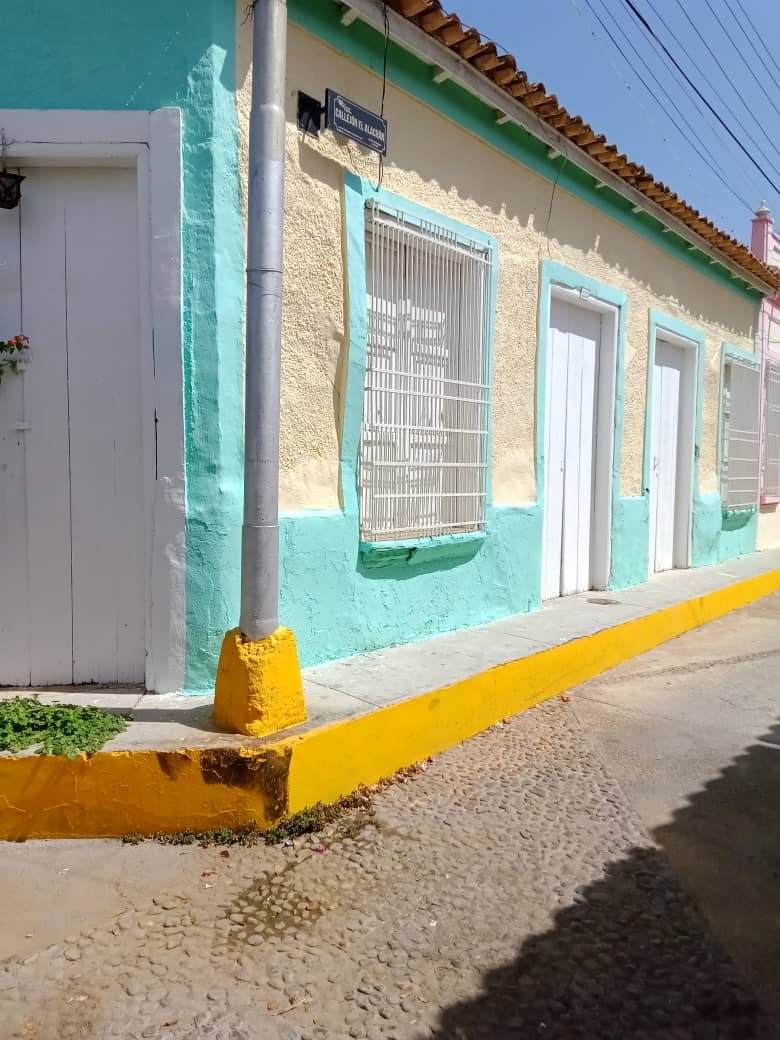
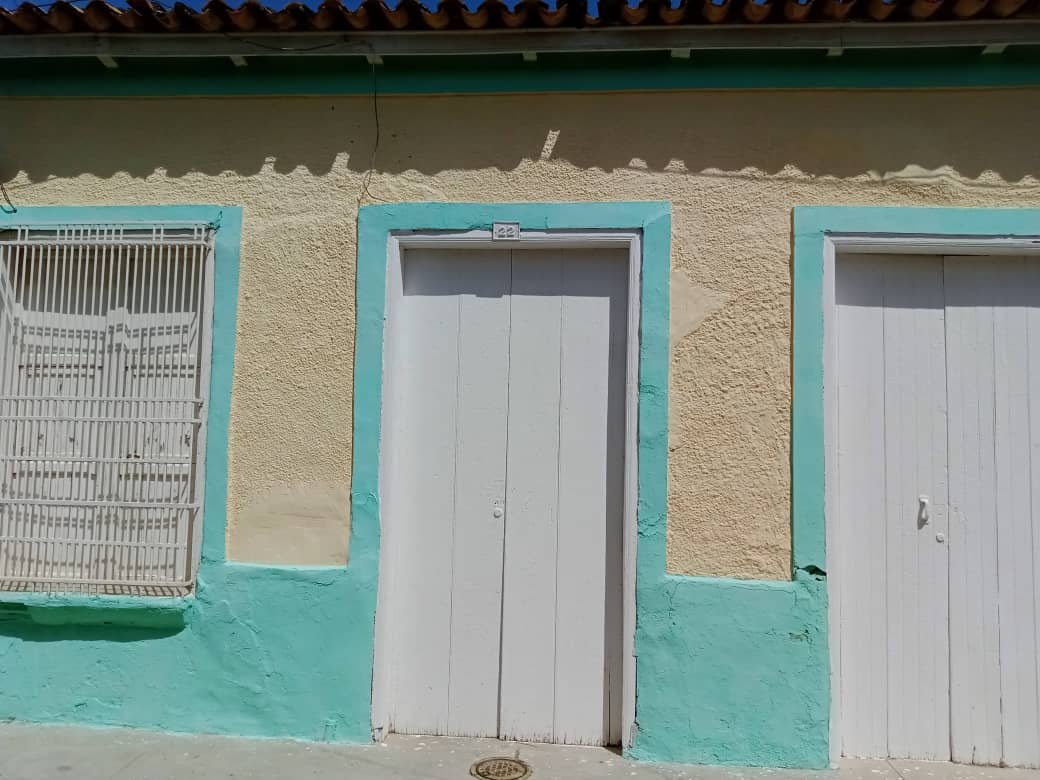
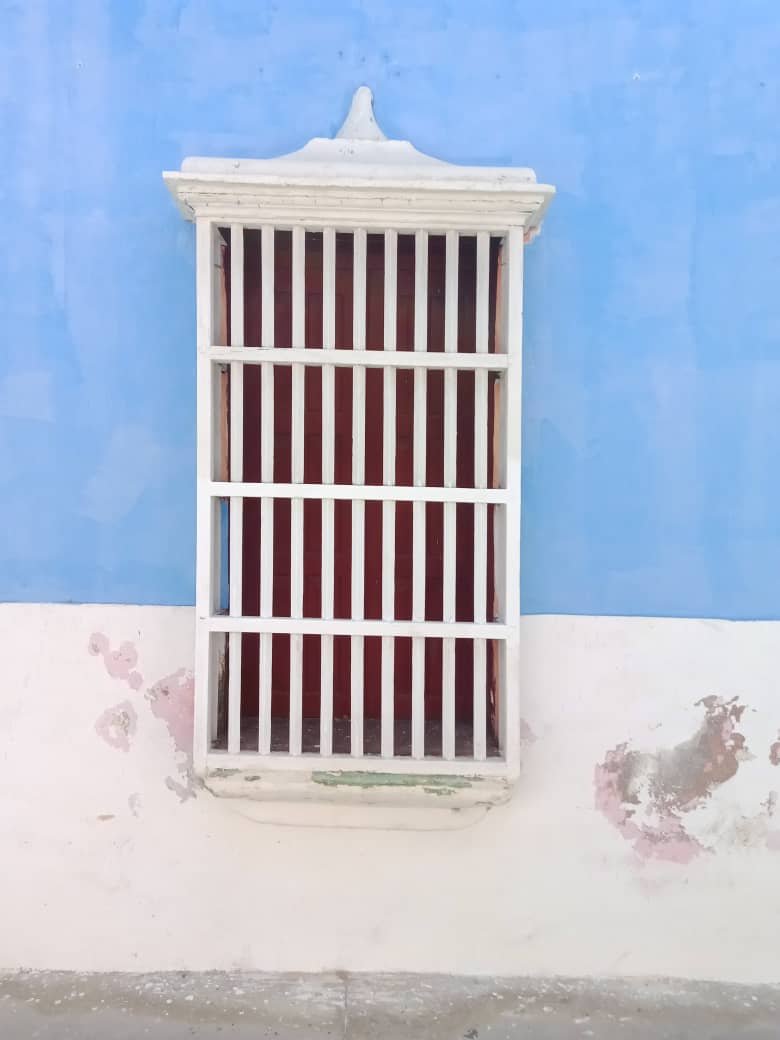
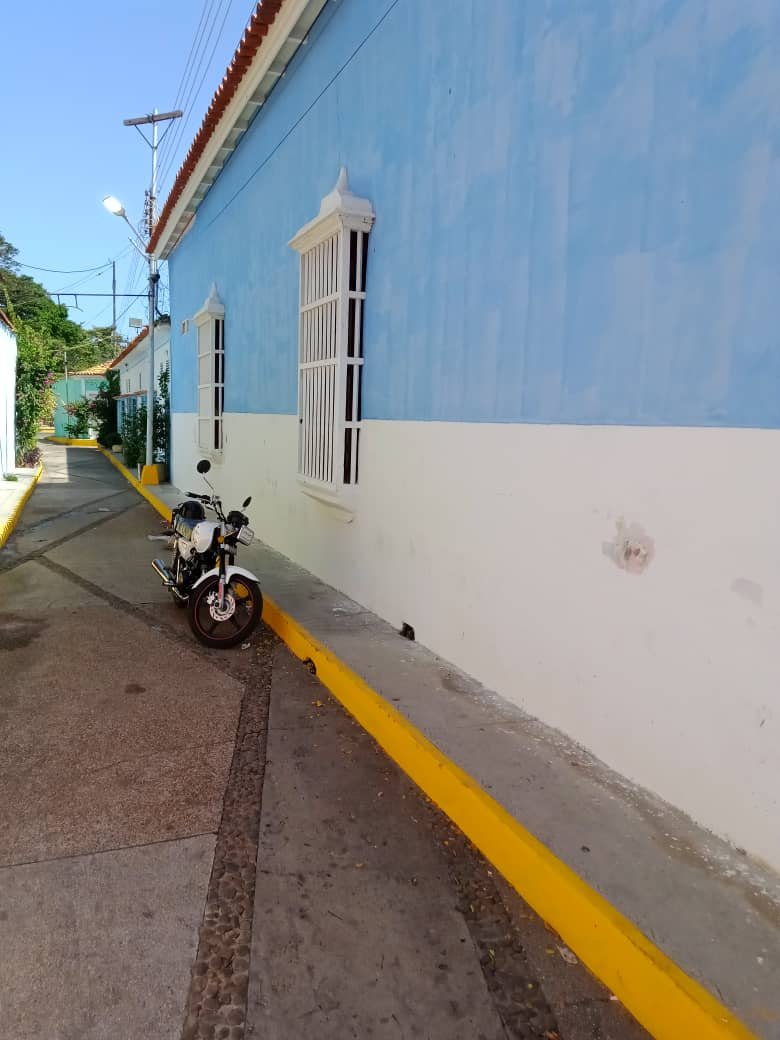
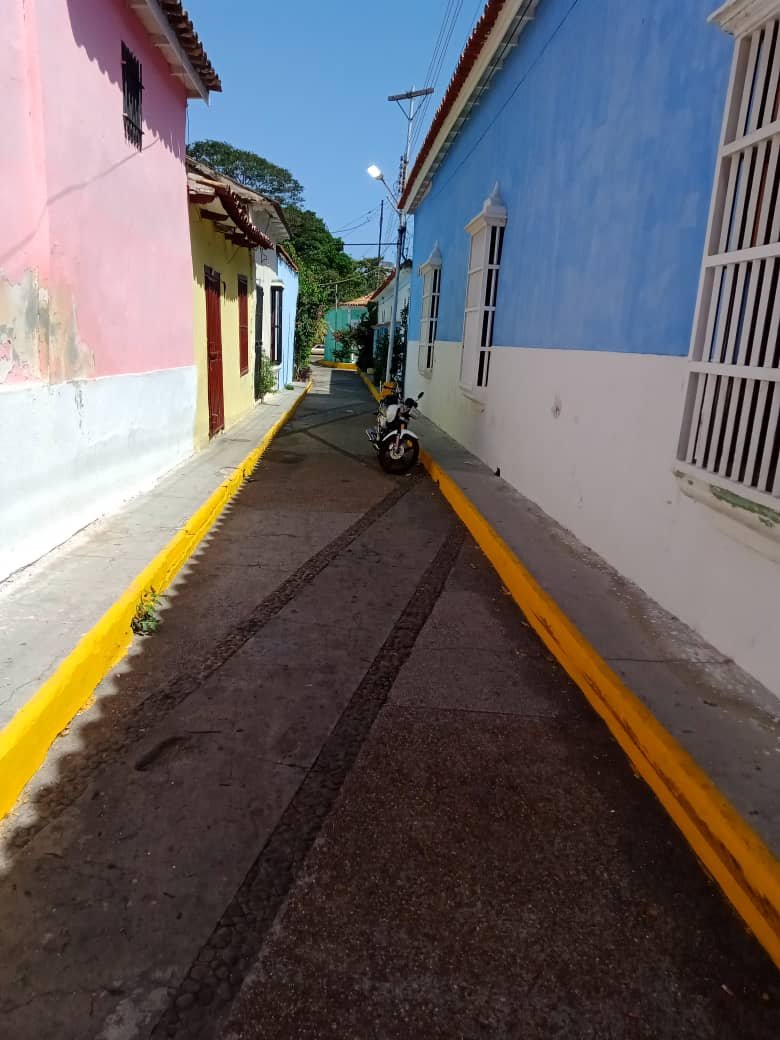

Blessings!

¡Bendiciones!

Código Worldmappin: [//]:# (!worldmappin 9.04345 lat -63.80859 long d3scr)
Translated with https://www.deepl.com/translator
All images are my own, captured by a Síragon LC-3000 camera.
Todas las imágenes son de mi autoría, capturadas por una cámara Síragon LC-3000.


Comments